Charger Xiamen Nanfu HG-1206W

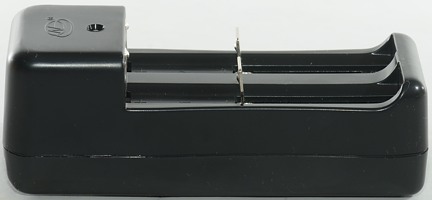
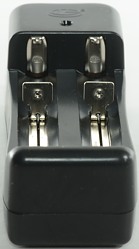
This charger is a very cheap multi LiIon chemistry charger that supports a wide variety of LiIon and NiMH sizes.
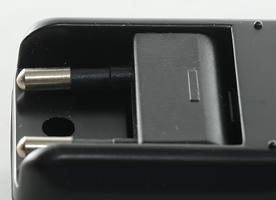
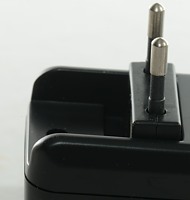
The charger is powered from the mains and is universal voltage (100-240 VAC 47/63 Hz). It has a foldable EU plug and it does not fit modern outlets where the holes are below the surface of the outlet.
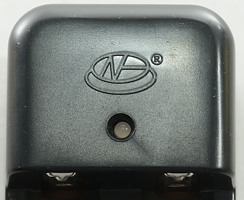
The charger has one led, that will be red when charging and green at other times.
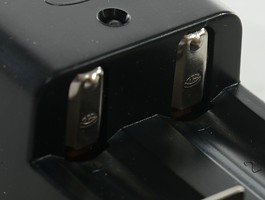
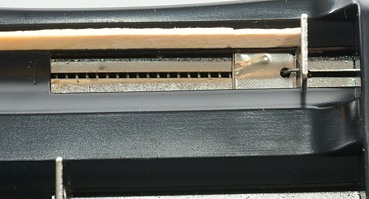
The charger uses the usual slider constrution and support from 30mm to 69mm, this means it will not support long protected 18650 cells.












The charger can only handle up to 69mm long cells, with both flat and button tops cells.
Measurements
- The two charger slots are mostly in parallel, i.e. it is best to only charge same type cell in the two slots.
- Will discharge a LiIon with about 0.4mA when not connected to power.
- Below 0.6 volt the charge current is about 15mA and the led is green.
- Between 0.6 and 1.37 volt it will charge NiMH batteries
- Between 1.37 volt and 1.8 volt it will charge with 8mA, this is a trickle charge for NiMH.
- Between 1.8 volt and 2.9 volt the current will vary, but is below 0.1A
- Above 2.9 volt LiIon is assumed.
- The led will toggle between red/green when the batteries are nearly full.
- The charger will always restart when voltage drops below termination voltage, because it never really turns off.
Charging LiIon
%20%231.png)
The charger do not use a CC/CV algorithm, but due to the switching on/off when the cell is nearly full it do work as some sort of CC/CV, but it never turns the charging off.
%20%232.png)
Both slots are in parallel and the charge profile will be the same
%20%231.png)
%20%231.png)
Differentcapacity means different charge time.
%20%231.png)
This older cell starts on the on/off charging faster, due to the higher internal resistance.
%20%231.png)
%20%231.png)
No surprise here, the current may be a bit high for smaller cells, but the charge works the same way as for any other cell.
.png)
With two cells the charge current is shared between the cells, because they are in parallel.

M1: 33,5°C, M2: 33,0°C, M3: 53,1°C, M4: 41,9°C, HS1: 78,4°C
The batteries are fairly cool during charge, but somewhere inside the charger there is a hot part.
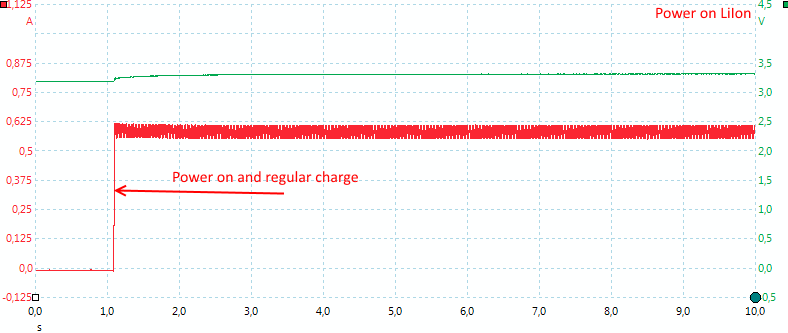
The charger is a very dumb charger and do not have anything that needs to initialized when powered on, it will start charge immediately.
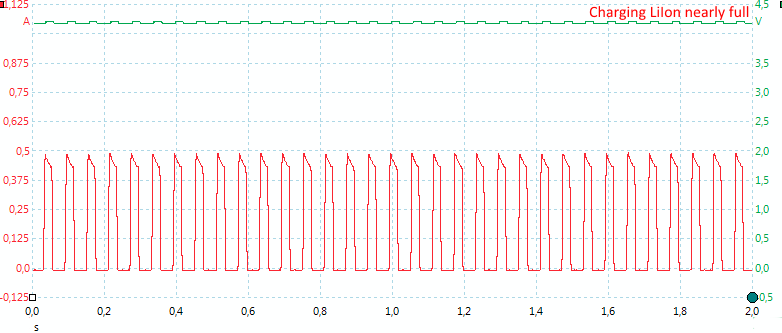
When the batteries are nearly full the red led will start flashing, because when the current is on the voltage is above termination voltage and when current is off the voltage is below termination voltage.
Charging NiMH
%20%231.png)
When charge current is turned on to NiMH the voltage will go above the termination voltage very fast and the charger will start pulsing.
This charging alogrithm, being based on voltage, will not fill the batteries completely.
%20%232.png)
The difference between the slots are due to cell differences.
%20%231.png)
%20%231.png)
Charging the Pro and XX works the same way.
%20%231.png)
And also the AAA.
%20%231.png)
A full cell is stopped very fast.
.png)
With two cells the current is shared between the cells.
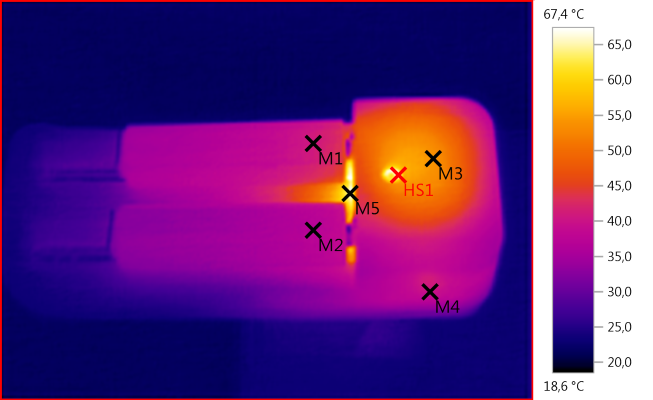
M1: 40,6°C, M2: 37,2°C, M3: 53,8°C, M4: 39,7°C, M5: 66,0°C, HS1: 67,4°C
NiMH is heated more than LiIon.

The charger starts charging immediatly when power is connected and the on/off cycling will also start soon (Depends on the actual cell).
Tear down
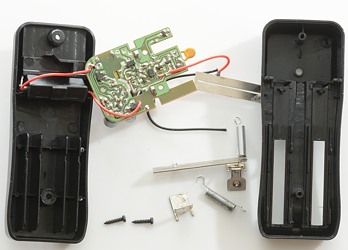
I had to remove two screws, then I could open it.
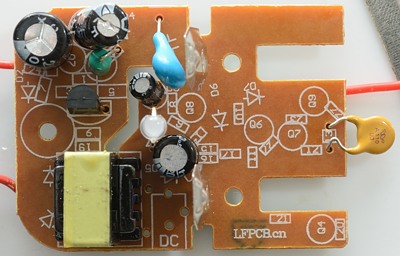
There is not many interesting parts. There is a safety capacitor.
The mains switcher is a single transistor, there is no IC to control it.
All the parts drawn on the circuit board is placed on the other side.

Diodes and a few transistors to control the charger. The slot in the circuit board do improve the safety, but not enough.
It looks like the yellow disc is used to link the two charge slots together.
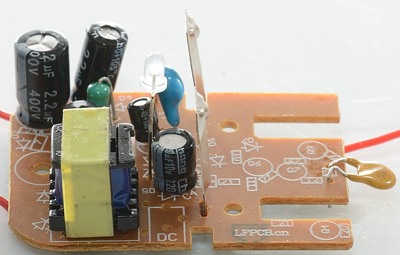
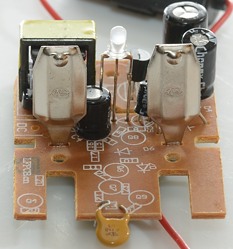
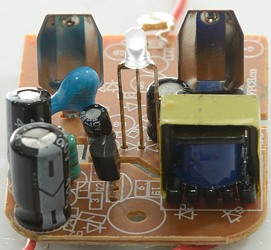
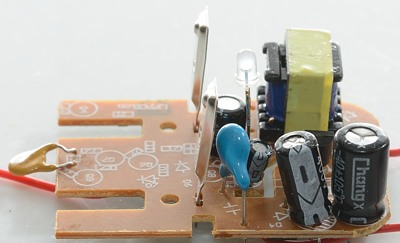
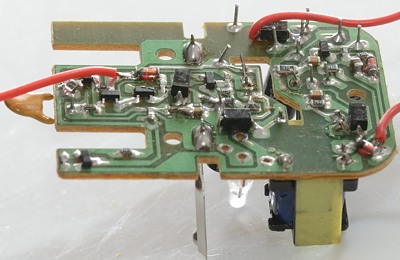
The charger passed an isolation test with 2500 volt, but failed a 5000 volt test.
Conclusion
The charger will fill batteries, but that is also the only good thing to say about it. Running the two charger slots in parallel, means the batteries have to be discharged to the same level for best function, never turning charger current off means extra wear on batteries.
Mains isolation not good enough and not fitting correctly in mains outlets is very bad.
Notes
Here is an explanation on how I did the above charge curves: How do I test a charger




















%20%231.png)
%20%232.png)
%20%231.png)
%20%231.png)
%20%231.png)
%20%231.png)
%20%231.png)
.png)



%20%231.png)
%20%232.png)
%20%231.png)
%20%231.png)
%20%231.png)
%20%231.png)
.png)









